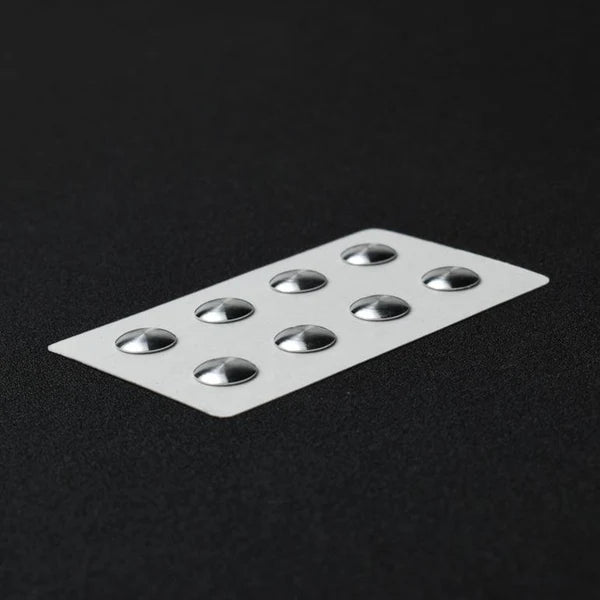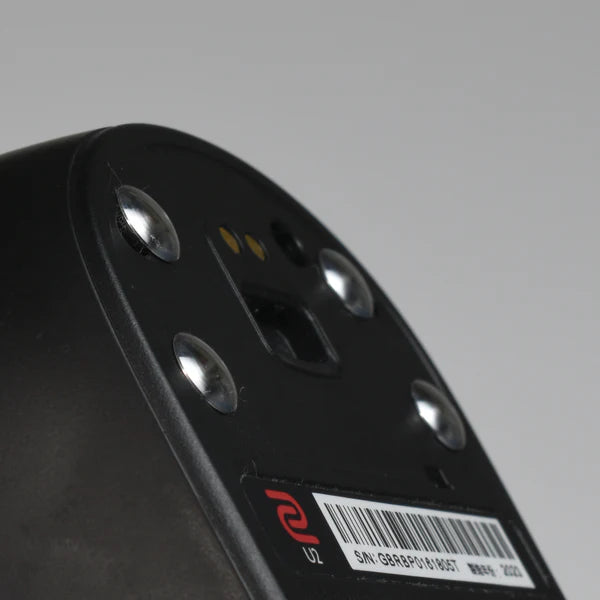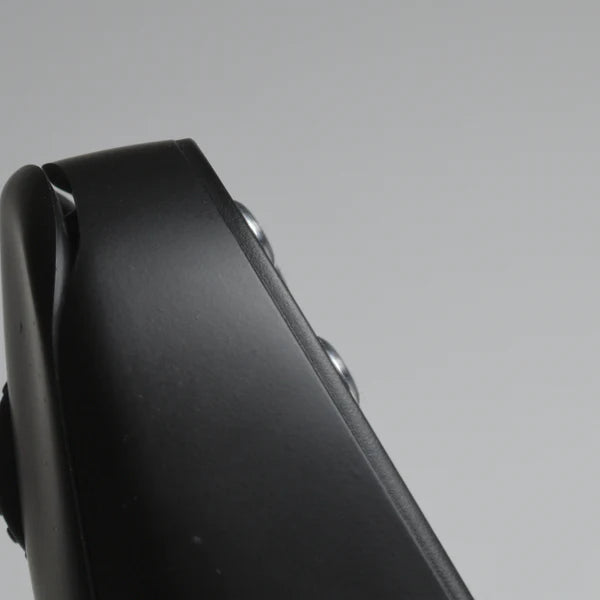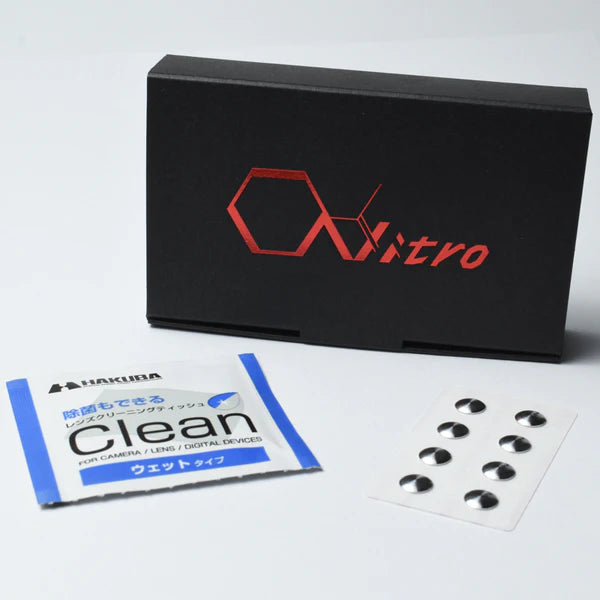Descripción
General-purpose round aluminum alloy mouse sole.
Diameter 6.8mm, sole thickness 1.0mm
1 set of 8 pieces
This product may not be consistent due to the manufacturing method of
general soles and the influence of materials.
This product has a machined sole, so there will be tiny cutting marks (tiny burrs that are invisible to the naked eye) on the initial surface.
A certain period of aging (breaking in) is required for the cutting marks to level out and for the sliding properties to stabilize. In particular, the initial aging period (2-4 hours after starting use) may cause damage to the fibers of the mouse pad, so we recommend playing with an old or inexpensive mouse pad during the initial aging period.
During the aging process, the mouse pad will feel a little rough when you slide it over the mouse pad. Use the disappearance of this roughness as a guide to when the initial aging process is complete.
The initial lightness and speed during gliding are one or two levels slower than PTFE soles, and are somewhere between speed and control.
After aging, the lubrication feels wet and smooth, closer to that of PTFE, rather than the dry and silky feel of ULTEM.
Due to the hardness of metal, it is easier to pick up the texture of the mouse pad than a resin-based sole.
Mouse pads with large surface irregularities such as Amundsen weave, mouse pads with rough plain weave, and mouse pads with thick original threads have a solid feel. This is more noticeable with the Speed shape.
Generally, we recommend mouse pads made of fine woven fabrics or dense knitted fabrics.
As for durability, after the initial aging is over, you can use it for a long time without having to worry about replacing it.
Regarding static electricity, because the material is conductive as a metal, it is difficult for static electricity to build up. Even when used in dry environments or on mouse pads where static electricity is a problem with traditional resin or glass soles, the material remains stable and does not stick to the mouse pad due to static electricity.
In terms of weight, the default surface sole of a typical mouse is about 2 to 3g, the ALM-B is about 1g with eight points attached, and plastic soles such as PLZ are about 0.8g, so the weight is not significantly heavier than the original surface sole or PTFE sole.
What's in the box:
・Mouse sole with double-sided tape attached × 1
・Alcohol pad for cleaning × 1
・Instruction manual (with Discord server QR code for purchasers only) × 1
▶︎Edge processing

(Above: Comparison of the three types of mouse feet (Speed, Balanced, and Flat) with a standard mouse foot)
nTech Skate comes in three shapes: Speed, Balanced and Flat.
The Speed and Balanced shapes are dome-shaped and connect smoothly to the bottom of the sole, so there is no part that corresponds to the edge of a normal sole.
In a flat shape, the edges are connected to the flat bottom surface as smooth arcs without any snags.
▶ Differences between Balanced, Speed and Flat shapes
 (Top: Image of the depth of the sinking)
(Top: Image of the depth of the sinking)
Speed shape
: When sinking, the image of the locking is applied and the ball stopping suddenly is used
. This is for people who have a strong image of a fast flick.
Balanced shape
: When sinking, the image of the brakes gradually decelerating
is used. This is for people who have a strong image of a constant speed chill aim.
The flat shape
and small sinking make the feeling of slipperiness less likely to change when clicking
→ For people who are conscious of relaxing their muscles and for whom changes in resistance can easily affect the feel of operation.
▶︎About the number of stickers
By changing the number of soles you attach, you can adjust the amount of sinking (braking sensation) in response to the load. Four soles will give a stronger braking sensation, while eight soles will give a weaker braking sensation.
Also, the more soles you attach, the less likely it is that the texture of the mouse pad fabric will be picked up, resulting in more stable operability.
However, the more soles you attach, the more resistance you will have.
Basically, there is a trade-off between stability and resistance.
3 points: This mouse pad must have a hard middle layer, but it allows you to feel the surface of the mouse pad most directly. It can only be used if you use a mouse pad that supports and moves the mouse with moderate force, rather than using it as loosely as possible.
4 to 6 points: Can be used with soft mouse pads, and is simple and easy to use. It is a good idea to adjust the number of points based on the braking caused by sinking. The bottom of the mouse will not rub even if you move it with your body relaxed.
8 points: It is very stable and you can easily feel the difference in the gliding speed of the material. It is stable regardless of the mouse pad or the amount of pressure you apply.

▶︎6 types of materials and differences in slipperiness - SOFT/SOLID and WET/DRY

(Above: A matrix of how each feels to use)
SOFT
- The material itself is soft and you don't feel much of the texture on the surface of the mouse pad
- there is little feedback to your fingertips when gliding or standing still, so it feels like it moves smoothly.
SOLID
- The material itself is hard, and you can easily feel the texture of the surface of the mouse pad
- It provides strong feedback to your fingertips when gliding or standing still, giving you a direct feeling of operation.
WET
- It feels like a wet tile and slides smoothly
. The lubricity of the material itself gives it a silky smooth feel.
DRY
- It feels smooth and slippery like dry skin
. The small contact area of the material gives it a linen-like smooth feel.
▶︎6 types of materials and differences in gliding - Comparison of initial and running speeds


(Above: Each sliding speed)
Initial: Initial movement
Sliding: During sliding




